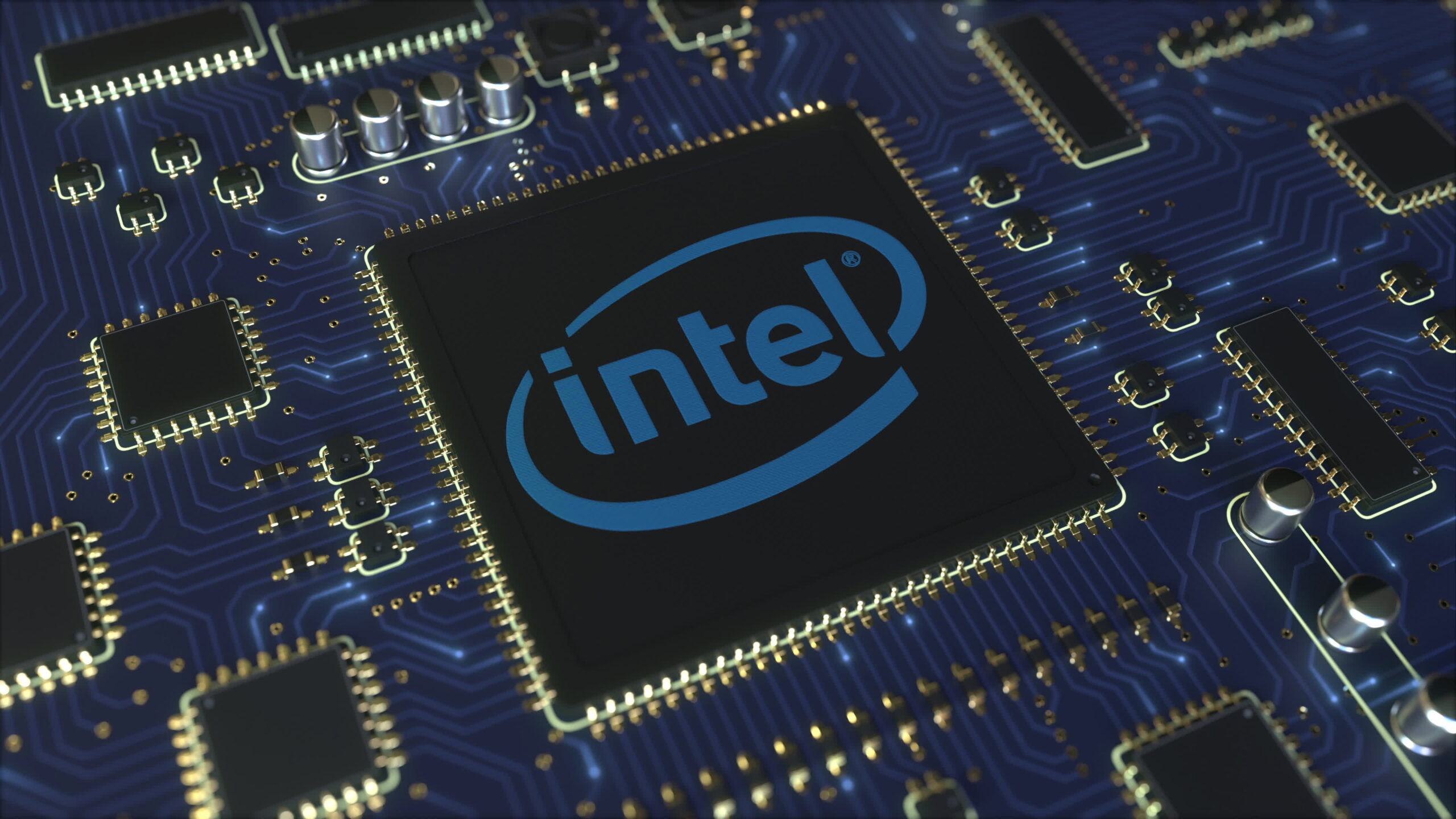Intel’s recent advancements in their Intel 18A process node are making waves in the tech realm. The successful booting of early chips and the release of PDK(Process Design Kit) 1.0 mark significant milestones in Intel’s journey. This aligns with its goal of reclaiming its position as a leader in advanced manufacturing. These developments, coupled with Intel’s strategic partnerships, are poised to reshape the foundry market. Understanding the implications of Intel’s progress is crucial for an organization’s future technology decisions. Delve into the early successes, external partnerships, and potential impact of Intel’s 18A process node on the semiconductor industry.
Intel Achieves Major Milestones for 18A Process Node
Intel 18A: Successful Chip Booting
- Intel has reached a significant milestone in its 18A process node development, with early chips successfully booting. This achievement demonstrates the viability of Intel’s advanced manufacturing techniques, particularly in implementing GAAFET (RibbonFET) and PowerVia technologies. The successful boot-up signifies that Intel’s ambitious roadmap for next-generation semiconductor manufacturing is on track.
Robust Performance Across Applications
- Early testing has shown robust performance in both client and server applications. Panther Lake, Intel’s client-focused chip, and Clearwater Forest, aimed at server applications, have exhibited promising results. This dual success underscores the versatility and potential of the 18A process node across different computing segments.
Preparing for External Customer Engagement
- Releasing PDK 1.0, Intel laid the groundwork for its first external customer tape-out in the first half of 2025. This move signals Intel’s serious intention to compete in the foundry market, offering its advanced manufacturing capabilities to third-party chip designers. The company’s progress in 18A development positions it as a potentially strong contender in the highly competitive semiconductor manufacturing landscape.
Intel 18A: Showcases Strong Performance for Client and Server Chips

Intel 18A process node has demonstrated impressive early successes, particularly in its performance for both client and server applications. This milestone underscores the potential of Intel’s advanced manufacturing technologies and their ability to deliver across diverse computing segments.
Panther Lake: Powering Next-Gen Client Devices
- The successful booting of early Panther Lake chips on the 18A node marks a significant achievement for Intel’s client computing division. These chips, designed for laptops, desktops, and more, showcase the node’s capability to deliver enhanced performance and power efficiency. The robust performance of Panther Lake chips signals Intel’s commitment to maintaining its competitive edge in the consumer market.
Clearwater Forest: Advancing Server Performance
- Equally noteworthy is the strong performance exhibited by the Clearwater Forest chips, Intel’s server-oriented processors built on the 18A node. It also demonstrates Intel’s ability to scale its advanced manufacturing process to meet the demanding requirements of data centers. As well as enterprise computing environments. The results suggest that Clearwater Forest chips could offer significant improvements in processing power, energy efficiency, and overall server performance.
RibbonFET and PowerVia: Enabling Next-Gen Performance
The performance of both Panther Lake and Clearwater Forest chips is due to Intel’s innovative RibbonFET (GAAFET) and PowerVia technologies. These advancements in transistor design and power delivery are proving instrumental. As it pushes the boundaries of semiconductor performance and efficiency across diverse computing applications.
RibbonFET and PowerVia Usher in New Era of Transistor Design
Revolutionizing Transistor Architecture
- RibbonFET, Intel’s implementation of Gate-All-Around Field-Effect Transistors (GAAFET), marks a significant leap in transistor design. This innovative architecture wraps the gate material around multiple silicon nanosheets, creating a ribbon-like structure. The result is also superior electrostatic control and reduced leakage current. Thus, enabling higher performance and improved energy efficiency in advanced semiconductor nodes.
PowerVia: Redefining Power Delivery
- Complementing RibbonFET, PowerVia introduces a novel approach to chip power distribution. By moving power delivery to the backside of the wafer, PowerVia frees up valuable space on the chip’s front side for signal routing. This ingenious design not only enhances power efficiency but also allows for higher transistor density, pushing the boundaries of Moore’s Law.
Intel 18A: Synergistic Impact on Chip Performance
- The combination of RibbonFET and PowerVia in Intel’s 18A process node represents a paradigm shift in semiconductor manufacturing. Together, these technologies also promise to deliver unprecedented levels of performance, power efficiency, and scalability. As chip designs become increasingly complex, the synergy between RibbonFET and PowerVia positions Intel at the forefront of next-generation computing solutions, catering to the ever-growing demands of AI, data centers, and high-performance computing applications.
Intel Prepares for First External 18A Customer Tape-Out in 2025
Milestone Achievement in Advanced Node Development
- Intel’s 18A process node has reached a significant milestone, paving the way for the company’s re-entry into the competitive foundry market. With the successful release of PDK 1.0 (Process Design Kit), Intel is now gearing up for its first external customer tape-out in the first half of 2025. This development marks a crucial step in Intel’s journey to reclaim its position as a leader in advanced semiconductor manufacturing.
Leveraging Cutting-Edge Technologies
- The 18A node showcases Intel’s prowess in implementing state-of-the-art technologies. By utilizing GAAFET (RibbonFET) and PowerVia, Intel aims to deliver superior performance and power efficiency. These innovations are critical in meeting the ever-increasing demands of modern computing applications, from high-performance client devices to data-intensive server environments.
Implications for the Semiconductor Industry
- As Intel prepares to onboard external customers for its 18A process, the semiconductor landscape is poised for a shift. This move not only demonstrates Intel’s commitment to its IDM 2.0 strategy but also signals increased competition in the foundry space. For IT leaders in the Asia Pacific region, this development offers new possibilities in chip design and manufacturing, potentially leading to more diverse and innovative semiconductor solutions shortly.
What Intel’s 18A Progress Means for Asia Pacific IT Leaders
Intel 18A: Technological Implications
- Intel’s 18A process node advancements represent a significant leap forward in semiconductor manufacturing. For IT leaders in the Asia Pacific region, this progress signals a potential shift in the competitive landscape. The successful booting of early chips using GAAFET (RibbonFET) and PowerVia technologies demonstrates Intel’s commitment to pushing the boundaries of Moore’s Law. This breakthrough could lead to more powerful and energy-efficient computing solutions, crucial for data centers and edge computing applications in the region’s rapidly growing tech sectors.
Strategic Considerations
- As Intel prepares for its first external customer tape-out in H1 2025, Asia Pacific IT leaders should start considering how this development might impact their long-term technology strategies. The availability of Intel’s advanced manufacturing capabilities could diversify supply chains and potentially alleviate some of the chip shortage issues that have plagued the industry. Additionally, Intel’s re-emergence as a leading-edge foundry player may introduce more competition in the market, potentially leading to more innovative products and competitive pricing.
Future-Proofing IT Infrastructure
- With Intel’s 18A progress, IT leaders in the Asia Pacific region should begin evaluating how these advancements might shape their future infrastructure needs. The improved performance and efficiency promised by Intel’s new process node could enable more sophisticated AI and machine learning applications, enhanced cloud computing capabilities, and more robust IoT deployments. By staying informed about these developments, IT leaders can better position their organizations to leverage next-generation technologies and maintain a competitive edge in the rapidly evolving digital landscape.
Summing It up
Considering the implications of Intel’s 18A progress, it’s clear that the company is making significant strides in advanced semiconductor manufacturing. The successful early chip boots and the release of PDK 1.0 demonstrate Intel’s commitment to innovation and its ability to deliver ambitious technological goals. For IT leaders in the Asia Pacific region, these developments signal a potential shift in the semiconductor landscape. As Intel prepares for its first external customer tape-out, closely monitor these advancements and consider how they might impact long-term technology strategies and partnerships in the evolving foundry market.
More Stories
Amadeus and Google Cloud Forge AI-Powered Alliance to Transform Travel Technology
In an era defined by rapid technological progress, the alliance between Amadeus and Google Cloud shines as a key innovation....
Microsoft Revives Command Line Editing with Lightweight ‘Edit’ Tool for Windows 11
Microsoft has reintroduced command-line text editing in Windows 11 with the launch of the lightweight 'Edit' tool. This move excites...
Veo 3 Unleashed: Google’s AI Video Model Redefines Creativity and Raises Deepfake Concerns
In an era where technology continually reshapes the creative landscape, Google's Veo 3 emerges as a beacon of innovation and...
Threads Empowers Creators with Multi-Link Bios and Performance Insights
Threads launches multi-link bios and detailed performance insights letting users to enrich their profile with up to five links.
Bajaj Finance Partners with Pennant Technologies to Modernize Lending
As a leading non-banking financial company in India, Bajaj Finance plans to shift its lending processes to Pennant’s advanced platform, Lending Factory.
Proofpoint Acquires Hornetsecurity to Strengthen Microsoft 365 Security for SMBs
Proofpoint has announced the acquisition of Hornetsecurity to strengthen cybersecurity for small and medium-sized businesses (SMBs). Hornetsecurity is a leading European provider of AI-driven Microsoft 365 security solutions.


